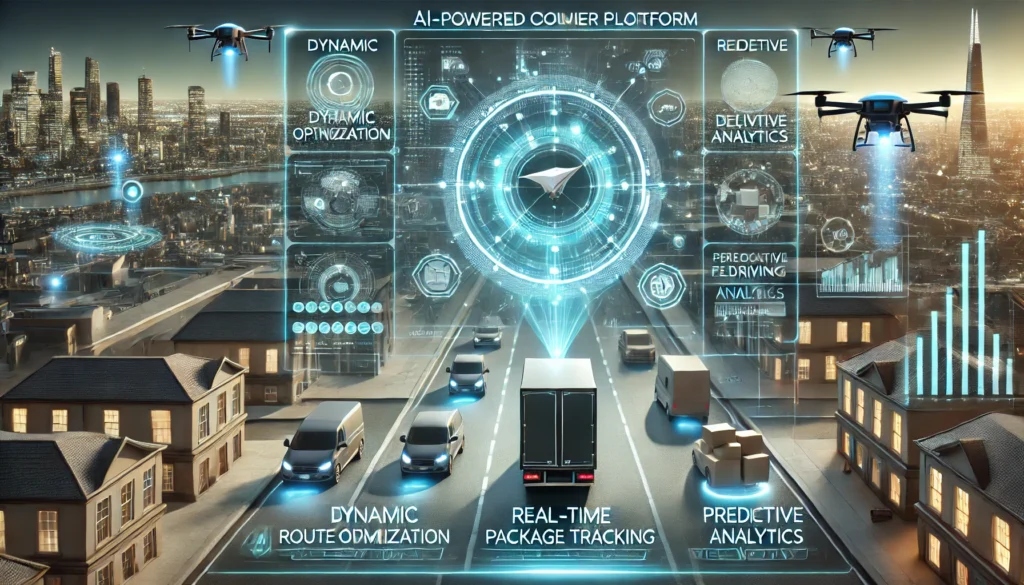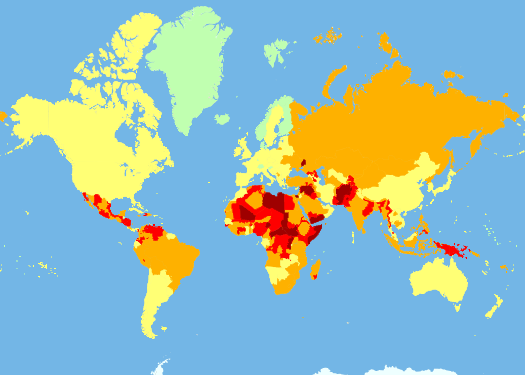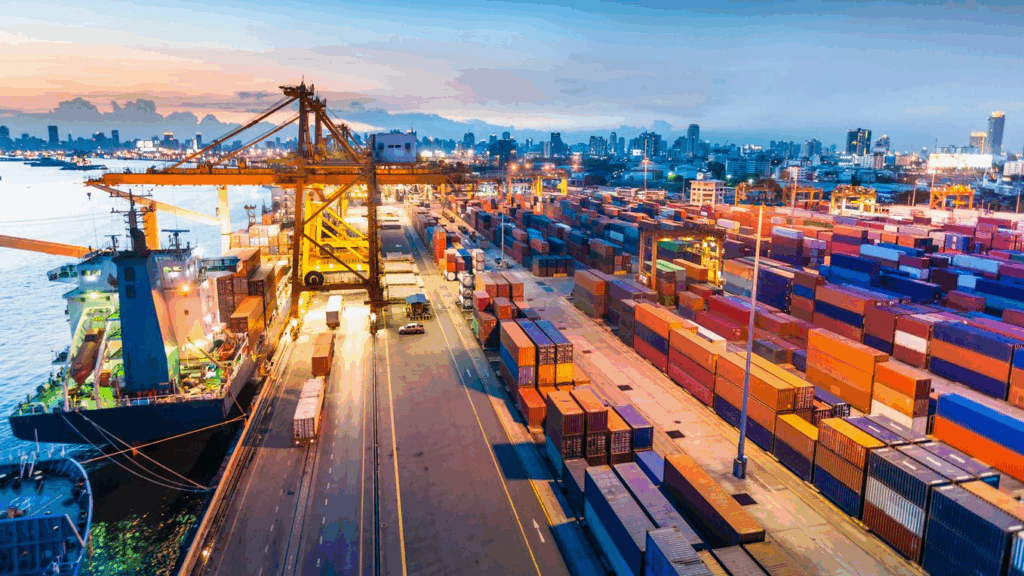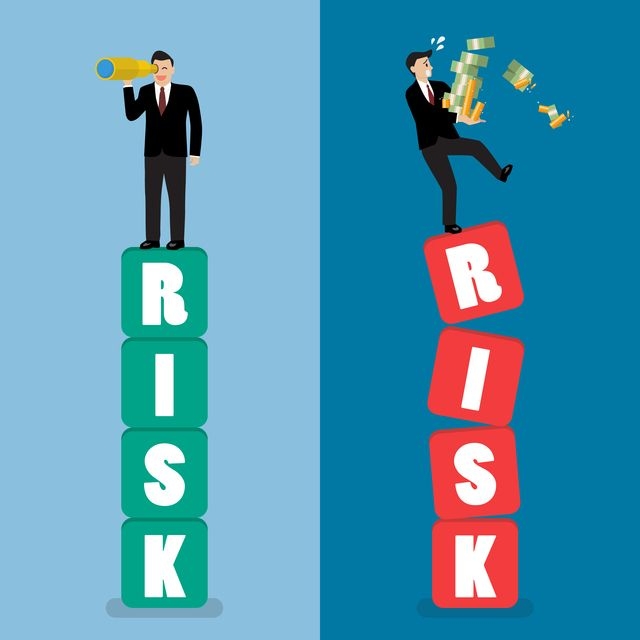Globale Logistik-Visibilität ermöglicht risikofreie Lieferketten
Globale Lieferketten sind komplexe Netzwerke, die jeden Tag Rohstoffe und Fertigwaren über Kontinente hinweg transportieren. Dennoch kann es jeden Moment zu Störungen kommen - sei es durch einen überlasteten Hafen, einen plötzlichen Streik oder eine Naturkatastrophe. Ohne einen klaren Überblick über den Status der Sendungen, die Kosten und die Kundenzufriedenheit bleiben Unternehmen im Ungewissen. Globale Logistiktransparenz schafft hier Abhilfe, indem sie Einblicke in Echtzeit bietet, die es Unternehmen ermöglichen, Probleme zu antizipieren, Risiken zu mindern und den Produktfluss aufrechtzuerhalten.

Was ist globale Logistiksichtbarkeit?
Globale logistische Sichtbarkeit bezieht sich auf die Möglichkeit, Sendungen über internationale Lieferketten hinweg zu verfolgen und zu überwachen, von der Produktionsstätte bis zur Auslieferung. Anstelle fragmentierter Aktualisierungen erhalten Unternehmen einen integrierten Überblick über ihr Logistiknetz.
Hauptmerkmale von Global Supply Chain Visibility
- End-to-End-Überwachung - Sichtbarkeit von der Fabrik über den Hafen und den Zoll bis zum Vertrieb.
- Datenintegration in Echtzeit - Kombination von Aktualisierungen für Spediteure, Lagersysteme und ERP.
- Prädiktive Analytik - Erkennen von Engpässen, bevor sie den Betrieb stören.
- Standardisierte Berichterstattung - einheitliche Daten über mehrere Regionen und Partner hinweg.
Globale Logistiktransparenz gibt Unternehmen die Sicherheit, schnell zu handeln, anstatt auf Überraschungen zu warten.
Warum Sichtbarkeit heute so wichtig ist
Lieferketten sind anfällig. Die Pandemie hat gezeigt, wie sich eine einzige Störung auf die gesamte Branche auswirken kann. Containerknappheit, schwankende Treibstoffpreise und eine sich ändernde Handelspolitik machen die Logistik noch riskanter. Ohne Transparenz können sich Unternehmen weder vorbereiten noch reagieren.
Wichtigste Vorteile von Globale Sichtbarkeit der Logistik
- Verbesserte Entscheidungsfindung - auf der Grundlage genauer Daten und nicht auf der Grundlage von Annahmen handeln.
- Niedrigere Kosten - Verzögerungen, Lagergebühren und verpasste Fristen zu reduzieren.
- Vertrauen der Kunden - Eine genaue Verfolgung schafft Transparenz.
- Widerstandsfähigkeit - Unternehmen können sich in Krisenzeiten schneller anpassen.
Gemeinsame Risiken in globalen Lieferketten
Lieferketten erstrecken sich über Tausende von Kilometern und mehrere Beteiligte. Je komplexer das System ist, desto anfälliger wird es.

- Unterbrechungen im Transportwesen - Streiks, Kraftstoffmangel oder Streckensperrungen.
- Lieferantenrisiken - Produktionsverzögerungen oder Qualitätsmängel in den Fabriken.
- Verzögerungen beim Zoll - fehlende Dokumente oder Änderungen der Rechtsvorschriften.
- Geopolitische Konflikte - Sanktionen oder Verschiebung von Handelsabkommen.
- Klima-Ereignisse - Überschwemmungen, Wirbelstürme oder Hitzewellen.
Nur eine globale Logistiktransparenz ermöglicht es, diese Risiken klar zu erkennen und zu handeln, bevor sie eskalieren.
Wie die Sichtbarkeit Risiken mindert
Mit Echtzeitüberwachung und Prognosetools können Unternehmen Störungen in handhabbare Herausforderungen umwandeln.
Beispiele für Risikominderung
- Alternative Streckenführung - wenn ein Hafen überlastet ist, werden die Sendungen frühzeitig umgeleitet.
- Dynamische Bestandsplanung - Anpassung der Lagerbestände bei verspäteten Sendungen.
- Überwachung der Lieferanten - Überwachung der Leistung von Lieferanten, um Schwachstellen zu ermitteln.
- Einhaltung von Vorschriften - Verringerung der Verzögerungen beim Zoll durch geprüfte Unterlagen.
- Kundenkommunikation - die proaktive Übermittlung von Aktualisierungen bei Verspätungen oder Änderungen.
Postpaket bietet Lösungen, die globale Spediteure miteinander verbinden und eine einheitliche Sichtbarkeit auch über Regionen mit unterschiedlichen Logistikstandards hinweg gewährleisten.
Technologie für mehr Transparenz in der Lieferkette
Moderne Sichtbarkeit hat nichts mit Tabellenkalkulationen oder manuellen Tracking-Nummern zu tun, sondern wird durch fortschrittliche Technologie unterstützt.
- IoT-Geräte - Sensoren überwachen Temperatur, Feuchtigkeit und Erschütterungen für empfindliche Fracht.
- Cloud-Plattformen - Daten von Lagern, Kurierdiensten und Einzelhändlern zu vereinheitlichen.
- KI-gesteuerte Analytik - Muster zu erkennen, Risiken vorherzusagen und Reaktionen zu empfehlen.
- Blockchain - sichere, transparente Aufzeichnungen über jede Transaktion und jeden Sendungsscan.

Gemeinsam sorgen diese Tools für eine starke Global Supply Chain Visibility und geben den Entscheidungsträgern die nötigen Befugnisse.
Aufbau einer widerstandsfähigen Lieferkette
Resilienz bedeutet nicht, Risiken zu vermeiden, sondern schnell zu reagieren, wenn sie auftreten. Globale logistische Transparenz gibt Unternehmen die Möglichkeit, sich anzupassen.
Schritte zum Aufbau von Resilienz
- Lieferanten diversifizieren - die Abhängigkeit von einer Region zu verringern.
- Mehrere Träger verwenden - Flexibilität bei den Versandoptionen schaffen.
- In vorausschauende Plattformen investieren - auf Echtzeit-Informationen zu reagieren.
- Zusammenarbeit mit Partnern - Daten über die gesamte Kette hinweg auszutauschen.
- Szenario-Planung - Ausweichrouten und -strategien im Voraus vorbereiten.
Die Rolle der Daten in der Logistik
Daten sind das Lebenselixier der modernen Lieferketten. Bei richtiger Anwendung können Unternehmen von reaktiven zu proaktiven Strategien übergehen.
- Dashboards - den aktuellen Status der Sendungen.
- Benutzerdefinierte Warnungen - sofortige Benachrichtigung der Teams über Risiken.
- Historische Analyse - wiederkehrende Engpässe zu ermitteln.
- Vorhersage - Vorhersage der künftigen Nachfrage und der Risiken.
Postalparcel integriert globale Logistiktransparenz mit umsetzbaren Daten, die es Unternehmen ermöglichen, Kosten zu kontrollieren und Unsicherheiten zu verringern.
Kundenorientierter Wert der Sichtbarkeit
Die Sichtbarkeit verbessert auch die Kundenbeziehungen. Für globale Käufer ist die Nachverfolgung nicht nur eine Annehmlichkeit, sondern eine Erwartung.
- Genaue Lieferfristen - weniger verpasste Versprechen.
- Proaktive Aktualisierungen - weniger Beschwerden und Anrufe beim Kundendienst.
- Reibungslose Rückkehr - Die Sichtbarkeit erstreckt sich auch auf die umgekehrte Logistik.
- Vertrauen in die Zuverlässigkeit der Marke - Transparenz schafft Loyalität.

Nachhaltigkeit und Compliance
Transparenz hilft den Unternehmen, ihre Lieferketten umweltfreundlicher und verantwortungsvoller zu gestalten.
- Kohlenstoffverfolgung - Überwachung der Emissionen bei allen Verbringungen.
- Nachhaltige Streckenführung - Optimierung der Kraftstoffeffizienz.
- Angleichung an den Rechtsrahmen - teure Strafen für die Einhaltung der Vorschriften zu vermeiden.
- Verantwortungsvolle Rückgabe - Verknüpfung der Logistik mit Recycling- und Wiederverwendungsprogrammen.
Durch die globale Transparenz der Logistik wird die Effizienz des Unternehmens mit der Verantwortung für die Umwelt in Einklang gebracht.
Globale Logistik Visibilität in Aktion
Betrachten wir zwei Szenarien:
- Ohne Sichtbarkeit: Ein Unternehmen Unerwartete Zollverzögerungen beim Versand von Elektronik. Es kommt zu Lieferengpässen, die Kunden beschweren sich und die Bußgelder steigen.
- Mit Sichtbarkeit: Dasselbe Unternehmen sieht die Zollrisiken voraus, leitet einen Teil der Sendung um, informiert die Kunden und passt die Marketingkampagnen an. Verluste werden minimiert, und das Vertrauen bleibt erhalten.
Informationen in Echtzeit verwandeln das Chaos in überschaubare Ereignisse.
Die Zukunft der Sichtbarkeit in der Logistik
Da der Welthandel immer unberechenbarer wird, steigt die Nachfrage nach Transparenz.
- KI-gesteuerte Risikomodellierung - die Vorhersage von Störungen mit höherer Genauigkeit.
- Automatisierte Zollabfertigung - Beschleunigung des grenzüberschreitenden Handels.
- Nachhaltige Logistikverfolgung - Konzentration auf kohlenstoffneutralen Betrieb.
- Hyperverbundene Netzwerke - Integration von Lieferanten, Spediteuren und Einzelhändlern in ein einziges Ökosystem.
Unternehmen, die sich frühzeitig darauf einstellen, gewinnen einen Vorteil in Bezug auf Effizienz und Widerstandsfähigkeit.

Schlussfolgerung
Globale logistische Sichtbarkeit ist die Grundlage für moderne Widerstandsfähigkeit der Lieferkette. Es reduziert Risiken, senkt Kosten und schafft Vertrauen bei den Kunden. Mit Tools, die globale Supply Chain Visibility bieten, verwandeln Unternehmen Unsicherheiten in Chancen. Postalparcel bietet Lösungen an, die Kuriere und Plattformen weltweit miteinander verbinden und so sicherstellen, dass Unternehmen die nötigen Einblicke erhalten, um mit Zuversicht zu handeln. Durch Transparenz können Unternehmen Unterbrechungen abmildern, Kundenerwartungen erfüllen und auf einem sich verändernden globalen Markt erfolgreich sein.
FAQ
1. Was bedeutet Sichtbarkeit in der Logistik?
Das bedeutet, dass Waren über die gesamte Lieferkette hinweg in Echtzeit verfolgt und überwacht werden. Dank der Transparenz können Unternehmen sehen, wo sich die Sendungen befinden, Verzögerungen erkennen und schnell reagieren.
2. Was versteht man unter globaler Logistik?
Unter globaler Logistik versteht man die Koordinierung des länderübergreifenden Warenverkehrs, einschließlich Transport, Zoll und Lagerung. Eine gute Sichtbarkeit der globalen Logistik sorgt für reibungslosere Abläufe und weniger Risiken.
3. Was ist das sichtbarste Element der Logistik?
Der Transportbereich ist in der Regel am sichtbarsten, da er den Sendungsstatus direkt anzeigt. Die Verfolgung von Lastwagen, Schiffen oder Flugzeugen hilft Unternehmen und Kunden, informiert zu bleiben.
4. Warum ist Sichtbarkeit in der Lieferkette wichtig?
Sie verringert die Unsicherheit, senkt die Kosten und verbessert die Planung. Transparenz stärkt auch das Vertrauen der Kunden, da sie genaue Lieferfristen und Aktualisierungen erhalten.
5. Wie hilft die globale logistische Transparenz beim Risikomanagement?
Sie bietet Echtzeiteinblicke, um Probleme wie Hafenverzögerungen oder Lieferengpässe frühzeitig zu erkennen. So können Unternehmen ihre Sendungen umleiten und kostspielige Unterbrechungen vermeiden.
Einblicke in die Industrie
Nachrichten über den Posteingang
Nulla turp dis cursus. Integer liberos euismod pretium faucibua








